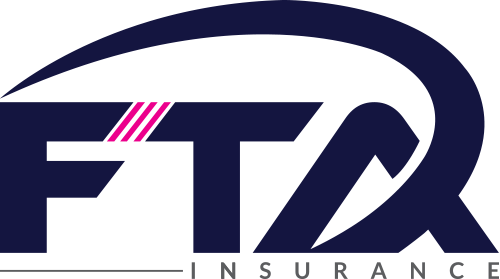So, your client has asked you to get them a D&C policy (aka Design & Construct Insurance)…
There is a lot to consider when getting D&C insurance on behalf of your client. This article is discussing in general terms only and focuses on exposure and pricing but don’t worry we will post more articles on other aspects next year!
First step is to check if a D&C policy is really what your client needs. Is your client contracted to building something or are they just providing a service/advice? If they are only contracted to provide a service/advice (eg design or project management) then they don’t need a D&C policy, a normal Professional Indemnity policy will probably do. Can’t tell what they are doing? This is not uncommon but often the amount of fee/turnover that the client is disclosing will be an indicator. Maybe ask for your client’s total income (not just the fees) and if your client is a builder then it should be disclosing well over $1m in turnover. If the client is only disclosing a few hundred thousand dollars in income then they are probably only providing a service/advice. Also check the insured’s website as hopefully that will give you a lot of information.
Before we move onto the areas of exposure for a D&C client we need to understand what, in general terms, the policy protects your client against. Contrary to popular belief, a D&C policy does not cover your client for construction defects, e.g. workmanship. A D&C policy covers your client against breach of professional services such as design, drafting, technical calculation or specification, project management, feasibility studies, programming and time flow management, surveying and inspection. However, it does not cover supervision of construction, manufacture, assembly, installation, erection or maintenance.
Next we need to break your client’s turnover down to the amounts which represent the different levels of exposure your client has. Broadly speaking there are four different levels of exposure.
FULL DESIGN
This is where your client has not only contracted to be responsible for design and construction but will carry out the design work themselves. This is the highest or greatest level of exposure because if there is an issue with the design (or other professional services mentioned above) then your client itself will be liable. Clients doing this usually have architects and engineers as part of their full time staff. This is not to say that they don’t from time to time subcontract out to a 3rd party professional for advice on niche areas (eg a geotechnical engineer) but most if not all the technical/design/project management work is carried out by your client’s employees.
 CONTINGENT DESIGN
CONTINGENT DESIGN
This is where your client is contracted to be responsible for design (and other professional services) and then sub contracts the design out to a variety of 3rd parties. These 3rd parties will include architects, engineers, project managers and certifiers. This carries less exposure than Full Design. This is because if there is a problem with the design although your client is contractually responsible for the design your client can pass on this liability to the 3rd party your client contracted out to do the work. Your client may still have to pay some legal expenses (and these can be large) if it is joined to any legal proceedings but should be able to pass on the liability for the mistake to the 3rd party. Sometimes your client will be able to get part of those legal expenses back but usually it is only one to two thirds of them, which still leaves your client out of pocket unless they are insured. The other exposure that this type of work brings is if the 3rd party your client subcontracted the work out to has closed and/or doesn’t have insurance. Remember that professional indemnity policies are issued on a claims made basis so if the 3rd party has gone out of business (retired, merged or closed down) and not purchased run off cover then your client will not be able to recover from the 3rd party and will have to pay the entire cost themselves. In such a situation your client will carry the same exposure as Full Design.
CONSTRUCT ONLY 
This occurs when your client only takes on responsibility for construction but not the design of the project. The principal will contract with architects and engineers themselves and the insured is in no way responsible for the work of these 3rd parties. So if there is a design error then the principal will sue the design professional themselves. This carries the least exposure for your client but it is by no means risk free. Your client might alter the plans or otherwise engage in professional services such a project management. It is either due to this incidental exposure or due to a contractual requirement that a client will want a D&C policy.
PROFESSIONAL FEE
This is where your client might just provide a professional service but not be contracted to provide any construction. It is unusual for this to occur but it does sometimes. Obviously this exposure is significant as your client will be responsible if there are any issues on the project related to these services.
Getting your client to break its turnover down into these categories is usually not easy as the client sometimes doesn’t track its turnover by the different categories. Your client will probably be involved in a number of projects throughout the year and those projects might fall within different categories. For example, they might do 2 projects for full design worth say $10m in turnover and then 4 projects for Contingent Design worth $5m in turnover. We apply different premium rates to each of the above categories. So, it is extremely important that the client makes its best endeavours to correctly classify its turnover as a misclassification can lead to increased premium or even a denial of indemnity in the event of a claim.

The other aspect that will affect your client’s premium is the type of work they are doing. Obviously, the more exposed to design related errors the higher the premium rate and excess e.g. a bridge would involve significant more design than say a house. There are some types of work that many insurers just won’t insurer under any circumstance eg desalination plants.
FTA focus on builders doing fit-outs and refurbs (office or retail), individual dwellings, low rise apartment buildings and smaller multi-res developments.
There other aspects of a D&C policy that you will need to consider (novated contracts) but this gives you an insight into the broad concepts that will significantly affect your client’s premium.

